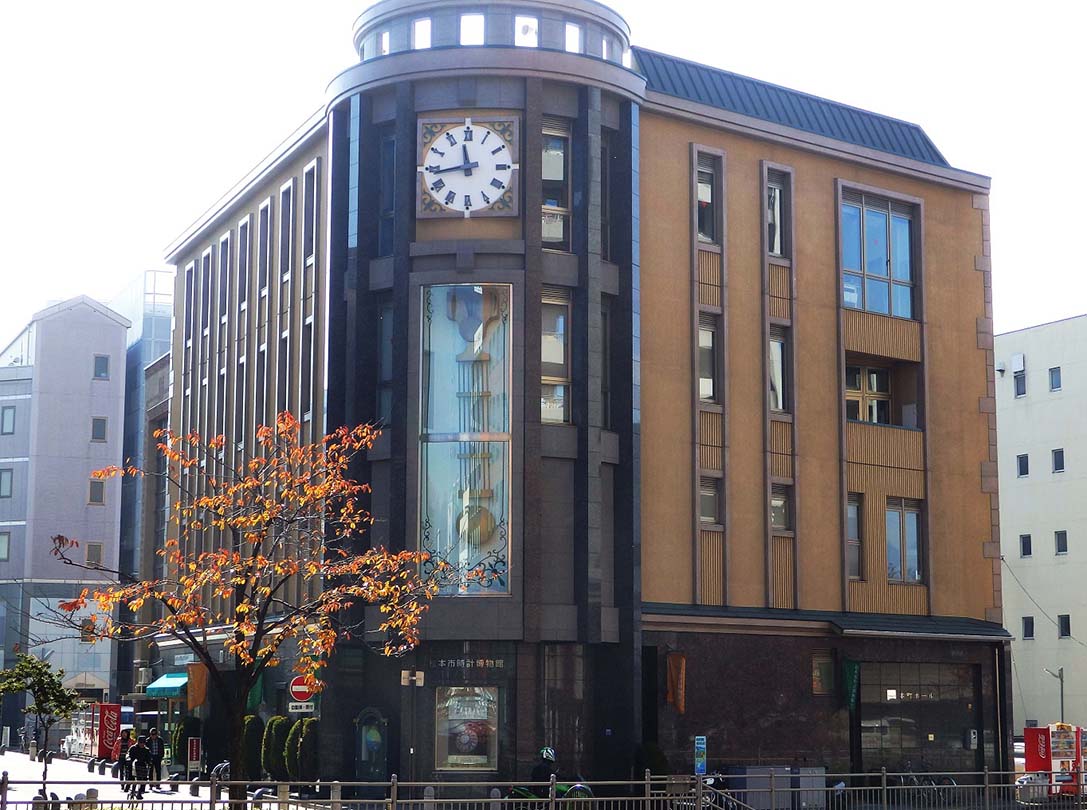
The Matsumoto Timepiece Museum is home to more than a thousand clocks, watches, and other timepieces dating back to the sixteenth century, with more than a hundred on display at any given time, most of them ticking away in perfect working order. The museum is only a short walk from Matsumoto Station in Matsumoto, Nagano, and it’s easy to spot on the street—just look for Japan’s largest working pendulum clock on the exterior facade!
-
01
The core of the museum’s holdings is the Honda Collection
The core of the museum’s holdings is the Honda Collection, which was donated to the city of Matsumoto in 1974 by engineer and timepiece collector Chikazo Honda (1896–1985). Honda began collecting timepieces in his twenties, using his engineering skills to restore and maintain them in working order. By the time he gifted his collection to Matsumoto, it contained 342 pieces from Japan, Europe, and the United States, some dating as far back as the sixteenth century.
Honda remained involved with his collection after making his donation. Timepieces he had collected were originally exhibited in a special section at the Matsumoto Museum, and every Time Day (June 6) until his death he would visit to make any necessary repairs. He also spent years researching and building a “rolling ball clock” purely from written records. In 2002, the collection was moved permanently to the newly opened Matsumoto Timepiece Museum. The museum keeps Honda’s spirit alive by ensuring that the clocks remain operational for visitors to marvel at.Chikazo Honda’s “rolling ball clock.” From left to right, the faces show the hours, minutes, and seconds. The seconds face only has four markings because the ball takes exactly 15 seconds to complete one circuit along the zigzag track and push the dial one notch forward.
-
02
Inside the Museum
The Matsumoto Timepiece Museum has two floors of exhibits. The ground floor is a journey through the history of timekeeping, from ancient Egyptian sundials through European pocket watches to twentieth-century quartz movements. The contemporary section of the floor includes some video material, and there’s also a “Well of Time” with an animated summary of the floor for children, watched over by a genial clockmaker statue from Italy.
The contemporary section of the Matsumoto Timepiece Museum with clocks from the space age and beyond.
The second floor has the bulk of the exhibits. It is divided into three areas: Japanese-style clocks, European and American–style clocks, and gramophones, all connected by “Grandfather Clock Road.” Some of these clocks are a miniature education in timekeeping in themselves, like the striking Japanese clock from the Edo period (1603–1868) showing how time was kept then. (In short, daytime and nighttime were divided into six equal sections each, numbered from nine to four backwards, with each also named after an animal of the Chinese zodiac for good measure.)
In the European and American section, there are clocks embedded with jewels, skull-shaped pocket watches, brightly painted cuckoo clocks, lamp clocks, frypan clocks, clocks where the “pendulum” swings around the face in a circle, clocks where the face is the pendulum . . . And, since they’re all in working order, if you time your visit to be on the hour, you can even hear them chime, just as they did decades or centuries ago.![A wall of European-style clocks, from cuckoo clocks to a gleaming bronze piece from eighteenth-century France with matching candelabras.]()
A wall of European-style clocks, from cuckoo clocks to a gleaming bronze piece from eighteenth-century France with matching candelabras.
Early gramophones have some similarities to older timepieces—fully analogue, hand-wound, and designed to turn at a steady pace—and perhaps this is why the museum has an entire room dedicated to gramophones and 78s, which are known as “SP” (short play) records in Japan. At certain scheduled times during the day, an attendant will wind the gramophones and put some records on to play, so you can feel what it was like to be an opera fan in the early twentieth century when the new Enrico Caruso dropped.
-
03
Getting There
・By public transport: Ten minutes’ walk from Matsumoto Station, which is about 2.5 hours from Shinjuku by Azusa express train or 4.5 hours by regular local train. The station is also connected to the local Shinonoi and Oito lines, and is served by several highway bus routes.
・By car: Fifteen minutes’ drive from the Matsumoto Interchange on the Nagano Expressway. No parking is available at the museum.- Matsumoto Timepiece Museum
-
4.0
130 Reviews -
-
- Nagano Pref. Matsumotoshi Chuou 1-21-15
-
-
-
- 0263360969
-
-
-
- 9:00-17:00(Last entry16:30)
-
View All




 Go here
Go here





